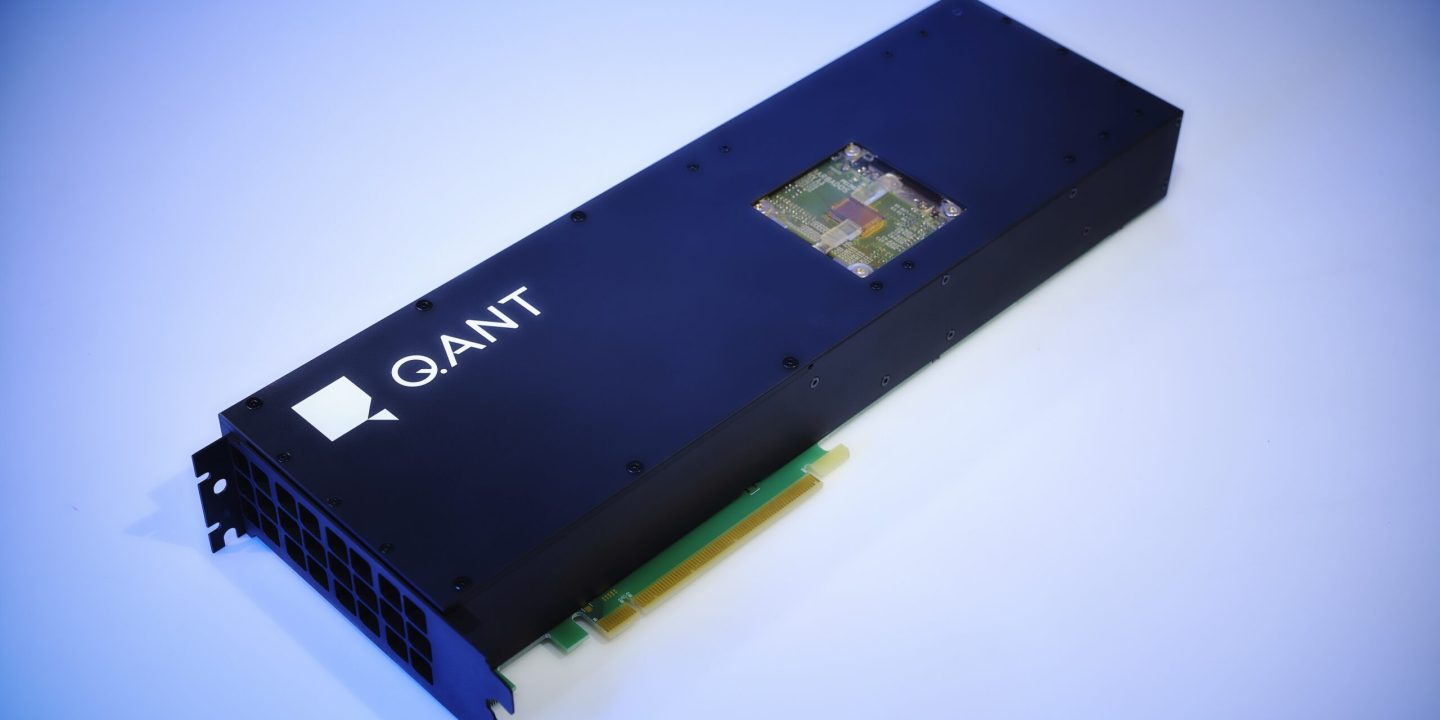Stuttgart / St. Louis – November 18, 2025 – Q.ANT today announced the availability of its next-generation Native Processing Unit: The Q.ANT NPU 2, with enhanced nonlinear processing capabilities to deliver orders-of-magnitude gains in energy efficiency and performance for AI and high-performance workloads. By performing nonlinear mathematics natively in light, the Q.ANT NPU 2 enables entirely new classes of AI and scientific applications including physical AI and advanced robotics, next-generation computer vision and industrial intelligence, physics-based simulation and scientific discovery. Q.ANT is offering its NPUs directly as a 19” Server Solution including x86 host processor and Linux operating system.
“Q.ANT offers the industry a new class of processors that enable performance gains beyond the incremental improvements of their digital counterparts – opening the door for superior algorithms that digital circuits cannot reach.” said Dr. Michael Förtsch, CEO of Q.ANT. “For years, AI has raced ahead of our ability to power it — energy became the new frontier. With our NPUs, we’ve changed the equation. Our NPU 2 proves that performance and sustainability aren’t opposing forces. They’re one and the same. This isn’t an evolution — it’s a new beginning.
Rethinking Computing for an Energy-Bound World
AI’s acceleration has reached the physical limits of silicon. Each new generation of GPUs consumes more power and water and produces more heat, with cooling systems accounting for up to 40 percent of total data-center energy. Photonic processing fundamentally changes this equation. Light travels faster, generates almost no heat, and can execute complex functions in a single optical step that would require thousands of transistors in a CMOS chip. By replacing transistor logic with native analog computation in light, Q.ANT’s architecture delivers up to 30x lower energy use and 50x higher performance for complex AI and HPC workloads.
Live Demonstration at Supercomputing 2025
Q.ANT will debut its second generation Native Processing Unit (NPU 2) at Supercomputing 2025 in St. Louis (November 17–21). At the LRZ booth #535, it will run a live image-based AI learning demo powered by the Q.ANT Photonic Algorithm Library (Q.PAL) on its photonic processors. Q.PAL offers developers efficient, nonlinear algorithms and functions for complex workloads being continuously enhanced and optimized by Q.ANT for application-oriented photonic processing. The demo will show how Q.ANT’s photonic processors achieve more accurate results with fewer parameters and less operations compared to conventional CPU-based systems, demonstrating real-world photonic acceleration within existing server architectures.
Photonic Computing scales faster than CMOS
Visitors can test how the NPU learns images within seconds using a nonlinear neural network. This marks a significant advance: within just one year, Q.ANT has progressed from simple digit recognition to image classification and image learning.
“Photonic computing is scaling much faster than CMOS,” said Dr Michael Förtsch, CEO of Q.ANT. “What took ten years for digital computing, we’ve just achieved in one year with photonics. The second generation of our Native Processing Unit shows how rapidly this transition is happening and why efficient, light-based computation will drive the next wave of AI and HPC.”
New in Generation 2
- Enhanced Nonlinear Processing Core: QANT’s second generation NPU introduces enhanced analog units optimized for nonlinear network models that dramatically reduce parameter counts and training depth while improving accuracy for image learning, classification, and physics simulation.
- Integrated Server-Class System: Delivered as a turnkey 19-inch rack-mountable server, the Native Processing Server NPS contains multiple NPUs Gen 2 and integrates seamlessly with existing CPUs and GPUs via PCIe and C/C++/Python APIs making photonic acceleration immediately deployable in HPC and data-center environments.
Photonic processors: making computer vision economical and AI models smarter
In practical settings like manufacturing, logistics and inspection, photonic processors can execute nonlinear neural networks far more efficiently. This allows visual AI to recognize defects, track objects, and optimize inventories with fewer parameters, dramatically reducing energy costs and making computer vision systems economically viable, even for tasks previously considered too compute-intensive to run. Photonic processors will accelerate the next generation of AI architectures, e.g. hybrid models that combine statistical reasoning with physical modelling. This will advance domains such as drug discovery, materials design, and adaptive optimization, where both nonlinear complexity and extreme energy efficiency are essential.
Availability
The Q.ANT servers equipped with the latest processor generation NPU 2 are available to order now, with customer shipments in the first half of 2026. Each system ships as a turnkey, data-center-ready server that integrates seamlessly into existing HPC infrastructures.
